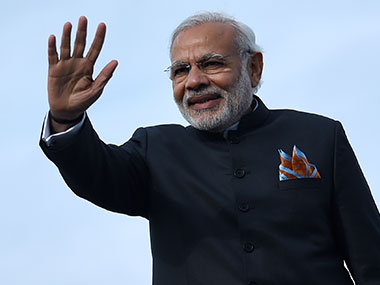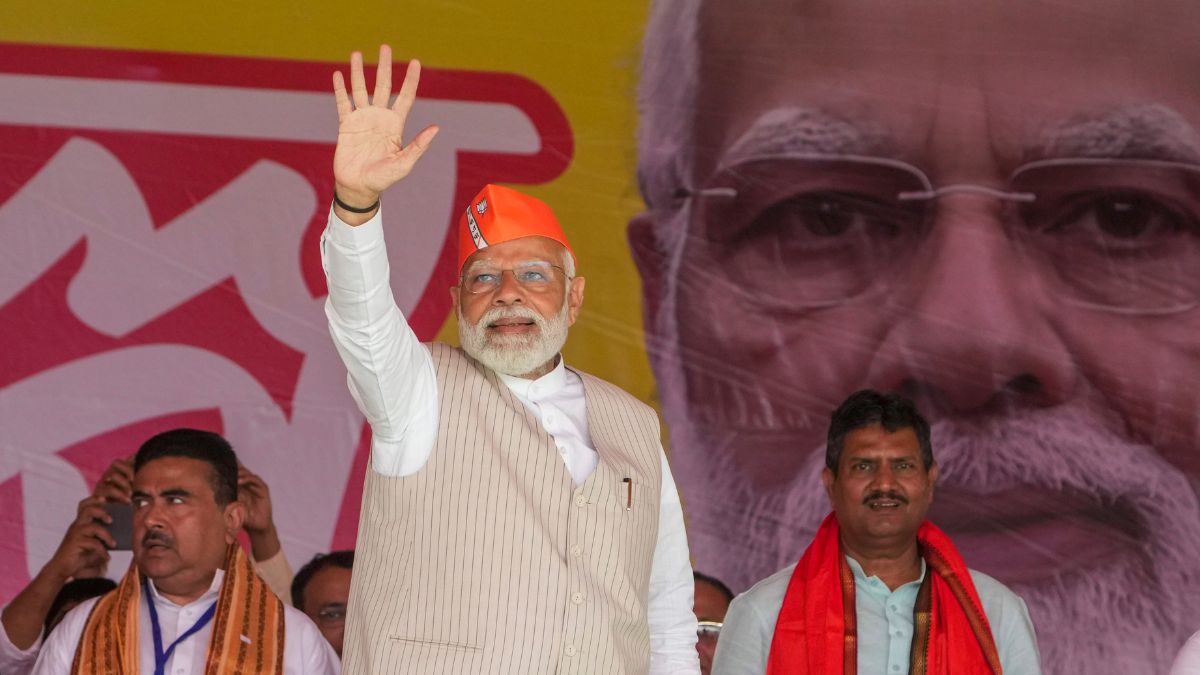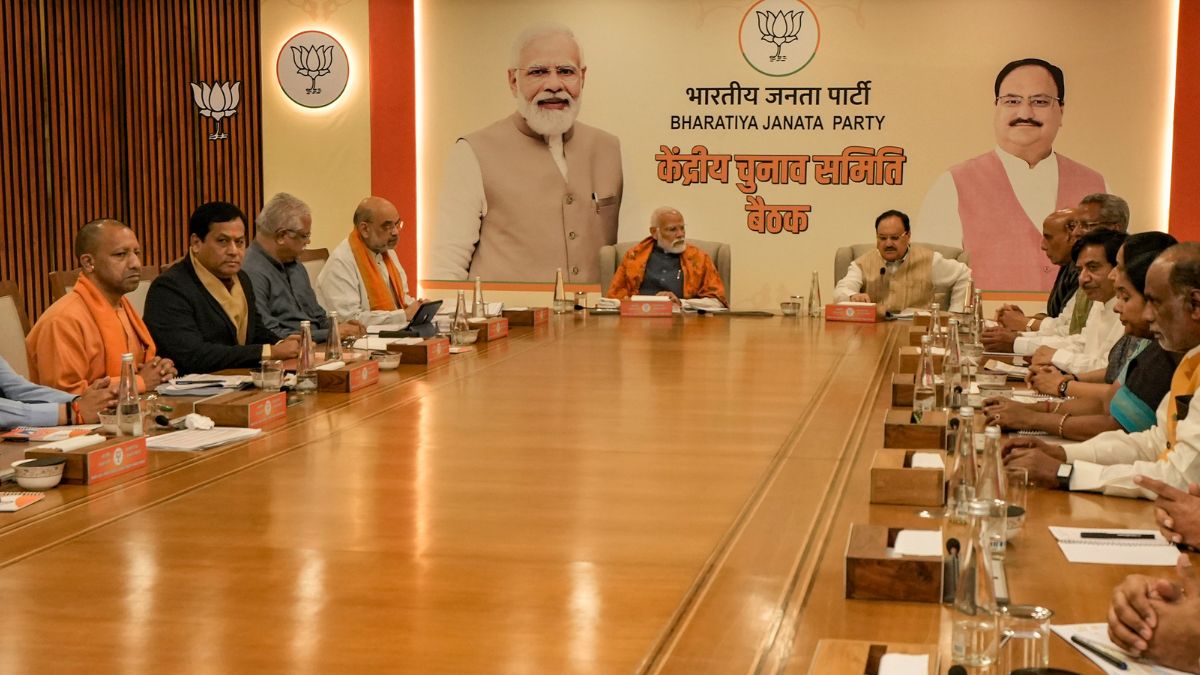In his first major interview to an Indian English news channel after taking over as Prime Minister in 2014, he remained the master of the show, with Arnab Goswami, the lion of Times Now, playing lamb to the man once called “Gujarat ka Sher”.
Not that Goswami didn’t have tough questions to ask, but Modi took them head on where he was comfortable, offered a straight bat for the difficult ones, and deflected those that seemed likely to dislodge his stumps. Barring the controversy related to RBI Governor Raghuram Rajan raked up by Subramanian Swamy, Modi made motherhood statements in response to most questions. He came up trumps for one simple reason: he looked earnest and a man engaged with his work and responsibilities. Not for him the distractions manufactured by the media. Barring congenital Modi baiters, whoever watched the show, would have come away with the feeling that we have right man in the top job.
This is not because of the answers he delivered, but the glimpses he gave into his personality and approach to issues. It is clear that he is a listener, and delves deep into problems. He is a boss with an eye for detail. At one point, when he was discussing water issues and the two consecutive droughts, he explained how he spent two or three hours each discussing water management with as many as 11 states. For a politician, he has a technocratic approach to problems. He is not just a big picture man, delivering visions and leaving it to minions to execute. He goes some levels below vision to seek delivery.
Though there was no mention of Modi’s much-bandied-about “Minimum government, maximum governance” slogan, it is now clear what he really meant. It was not a Thatcher or Reagan approach to shrinking government, but about making a government work better, with the top man pushing his troops hard to do better. Under Modi, minimum government is not about the size of the government at all. That won’t happen. It may even grow, given Modi’s efforts to position himself and his party to the centre-left, with a pro-poor agenda. It is politically the best position to take, never mind what the economic Right in India thinks about it.
On another occasion, he showed us how he separates Modi the politician from Modi the administrator. Asked, at one point, how he thinks about elections, he explained, not insincerely, that his decisions are not dictated by election considerations. He is apolitical in his decision-making when no elections are in sight; he switches to election mode when he is leading his party into it. He seems to have a remarkable ability to play both roles simultaneously. This is what he did in Gujarat. In the first four years after re-election, he would focus on governing. In the last year, he would be become a politician even while retaining his non-political side for critical decisions.
The interview also confirmed that Modi does not trust the media. This came through whether he was talking about foreign policy or his address to the US Congress or while answering questions about wilful defaulters.
When asked about his keen interest in foreign policy and his many foreign tours, he explained this simply: “The world didn’t know me. The world wants to know who the head of the state is. If someone would want to know Modi through the eyes of the media, then he would be disillusioned on which Modi is the real Modi. If this happens, the country will be at a loss. Modi’s personality shouldn’t be a hindrance for the world to have faith in India.”
Translated, this means he does not want the media to play middleman in how the world views him.
On another occasion, when he was asked about the element of humour he introduced while addressing the US Congress, he replied: “I have a humourous side but these days humour can be a risky thing.” Pressed further, he had this to say: “In this era of 24/7 news channels, anybody can lift a small word and make a big issue out of it. But I will tell you the truth, the reason for the absence of humour in public life is this fear. I am myself scared.”
He didn’t quite appear scared, but the point was clear. He thinks the media distorts.
When asked about his commitment to take on wilful defaulters, given that the government is seen to have let Lalit Modi and Vijay Mallya escape abroad, Modi took another side swipe at the media. “Firstly, this question is not in the minds of people. The people of India have confidence that if there’s someone who can do this (bring defaulters to book), it is Narendra Modi and he will do it. Citizens of the country have full faith.”
What he means is that it is the media that does not have faith in him, and (conversely) him in the media.
Then again, when asked why he lets Sangh loud mouths say what they want, his answer was the media: “Don’t make them heroes, they will stop?.” When Arnab protested and said “we don’t make them heroes, we make them villains”, Modi’s counter was classic: “But why do you make them so big? I see such statements by people on TV, whose faces I haven’t even seen and they end up becoming spokesmen on TV?.” Touche.
On the Subramanian Swamy-Raghuram Rajan issue, Modi’s answer had a double edge: he dissed Swamy for his publicity stunts, but also gave enough indication that Rajan’s term would not have been extended even without Swamy inserting himself into the issue. Modi pointedly suggested that Rajan’s patriotism could not be questioned and pointedly referred to the fact that while people had talked about Modi removing Rajan as soon as the new government, he did not do so. Implied in the answer was the assertion that he could have done so and instead chose to leave things be till his term actually ended.
On both Pakistan and China, where Modi’s policies do not appear to have yielded any dividend, Modi suggested that he was following the twin track approach - of continuing talks to make sure India is not accused of aggressive intent, and using stronger measures when provoked on the border. On China too, where India was blocked from the NSG entry due to the Chinese veto, Modi spun the setback differently: it looked bad due to his success in the US, which got hyped up by the media. ?More realistically, he emphasised that India had many problems with China and the dialogue was about finding areas of common concern. Where the differences existed, neither country was in any doubt about where their respective interests lay. In short, Modi is still feeling his way through on finding the right mix of responses to India’s two biggest geopolitical and regional rivals.
On issues ranging from the economy to corruption to jobs and the rural distress, Modi’s answers were standard and correct ones. The real value of the interview was not in what was said but in how it was said. We know Modi a little better than before and much of it is good.


)




)
)
)
)
)
)
)
)